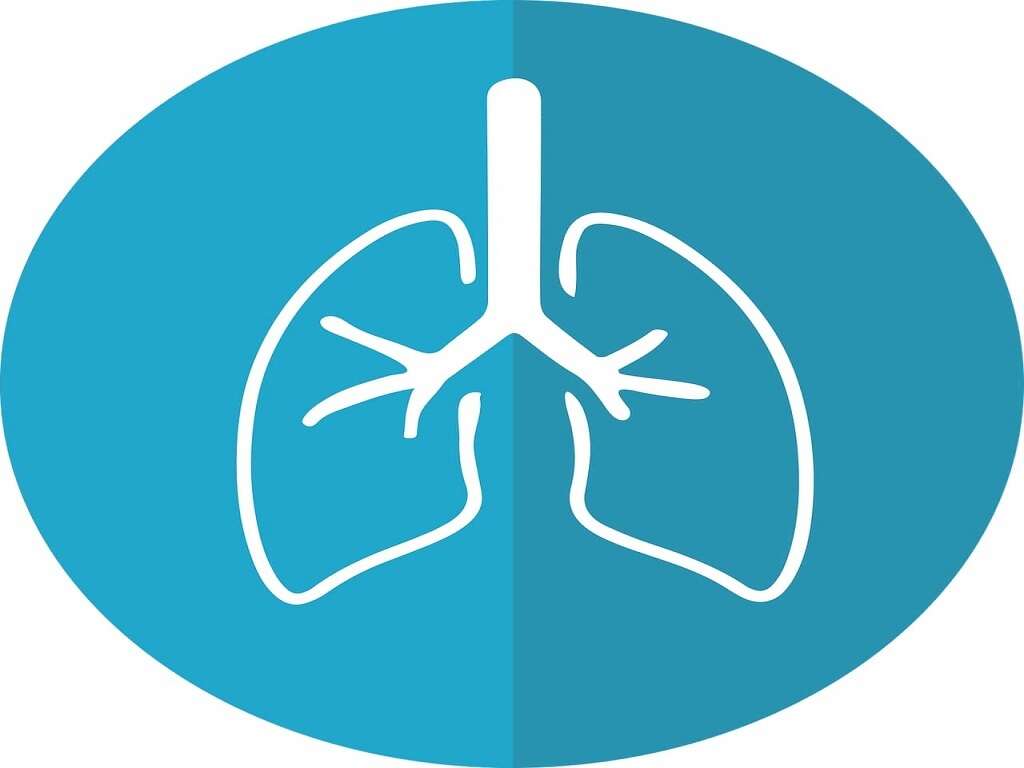10 Influenza B Symptoms
 Article Sources
Article Sources
- 1. Grill, Lawrence. 'What Is Type B Flu? - Featured, Health Topics, Men's Health, Pediatrics, Women's Health.' Hackensack Meridian Health, 29 Jan. 2020, www.hackensackmeridianhealth.org/HealthU/2020/01/29/what-is-type-b-flu/
- 2. 'Influenza (Flu).' Mayo Clinic, Mayo Foundation for Medical Education and Research, 19 Dec. 2020, www.mayoclinic.org/diseases-conditions/flu/symptoms-causes/syc-20351719.
- 3. 'Influenza: Questions and Answers.' Immunization Action Coalition, Oct. 2020, https://www.immunize.org/catg.d/p4208.pdf
- 4. 'Why Do Muscles, Joints Ache during the Flu?' News, news.llu.edu/health-wellness/why-do-muscles-joints-ache-during-flu.
- 5. 'Flu Symptoms & Complications.' Centers for Disease Control and Prevention, Centers for Disease Control and Prevention, 31 Aug. 2020, www.cdc.gov/flu/symptoms/symptoms.htm.
- 6. 'Pneumonia: Symptoms, Treatment, Causes & Prevention.' Cleveland Clinic, my.clevelandclinic.org/health/diseases/4471-pneumonia.
- 7. National Headache Foundation. 'What Your Flu Headache Is Telling You.' National Headache Foundation, 3 Aug. 2018, headaches.org/2018/02/26/flu-headache-telling/.
- 8. 'Seizures.' Mayo Clinic, Mayo Foundation for Medical Education and Research, 3 June 2020, www.mayoclinic.org/diseases-conditions/seizure/symptoms-causes/syc-20365711.
Influenza is a viral infection that can infect everyone, from infants to the elderly. There are several flu strains: A, B, C and D. Type D only affects animals, and type C usually produces mild symptoms.
Most people who develop the flu have strain A. Symptoms are similar in influenza A and B, but most adults with strain B notice milder effects, while children may develop more severe symptoms.1Grill, Lawrence. ‘What Is Type B Flu? - Featured, Health Topics, Men’s Health, Pediatrics, Women’s Health.’ Hackensack Meridian Health, 29 Jan. 2020, www.hackensackmeridianhealth.org/HealthU/2020/01/29/what-is-type-b-flu/ People at risk of complications from influenza B should contact their doctor at the first signs of flu.2‘Influenza (Flu).’ Mayo Clinic, Mayo Foundation for Medical Education and Research, 19 Dec. 2020, www.mayoclinic.org/diseases-conditions/flu/symptoms-causes/syc-20351719. A doctor can prescribe antiviral medications to mitigate the symptoms.3‘Influenza: Questions and Answers.’ Immunization Action Coalition, Oct. 2020, https://www.immunize.org/catg.d/p4208.pdf

1. Body Aches
Influenza B symptoms vary from person to person, but they usually appear suddenly and often include body aches. Muscles may feel sore, and a headache may be present. The achiness is a result of inflammation caused by the body producing white blood cells to fight the infection. Using over-the-counter pain-relieving medications may help the person feel more comfortable.
Most people recover from the flu without medical treatment, but if the muscle aches become severe, it’s time to call the doctor. Similarly, seek medical advice if someone experiences severe chest or abdominal pain.

2. Fatigue
Most people with influenza B feel tired and weak as the body mounts its defense and uses its resources to fight off the virus. Fatigue may persist even after other symptoms abate. Bed rest, hydration and eating healthy foods can help combat fatigue.
If an adult with flu symptoms experiences severe weakness or dizziness, seek medical advice. Immediate medical care is also necessary if a child or an adult suffering from influenza B is difficult to rouse, exhibits confusion or is not alert.5‘Flu Symptoms & Complications.’ Centers for Disease Control and Prevention, Centers for Disease Control and Prevention, 31 Aug. 2020, www.cdc.gov/flu/symptoms/symptoms.htm.

3. Stuffy or Runny Nose and Sneezing
Because influenza B is a respiratory illness, many people think they merely have a cold when symptoms begin. The sneezing and stuffy or runny nose may well be signs of a cold if they appear gradually, but those same symptoms, when they come on suddenly, may indicate the presence of the flu.
The virus causes swelling in the nasal passages and the accumulation of fluid. Breathing steam can help alleviate some of these symptoms. Using over-the-counter remedies may also be helpful.2‘Influenza (Flu).’ Mayo Clinic, Mayo Foundation for Medical Education and Research, 19 Dec. 2020, www.mayoclinic.org/diseases-conditions/flu/symptoms-causes/syc-20351719.

4. Cough and Sore Throat
A nonproductive cough may accompany the stuffy nose and other cold-like symptoms. The cough may be dry and persistent, and it may last for several weeks after the rest of the flu symptoms dissipate.3‘Influenza: Questions and Answers.’ Immunization Action Coalition, Oct. 2020, https://www.immunize.org/catg.d/p4208.pdf A sore or scratchy throat may also be present.
Drinking plenty of fluids, especially hot tea and soups, may help, and adding honey to hot tea can help soothe a sore throat and quiet coughs. Over-the-counter remedies, such as cough medicines and acetaminophen, may also alleviate coughing and throat pain.

5. Fever
Some people develop a fever when they contract influenza B. Others, especially older adults, remain fever-free.5‘Flu Symptoms & Complications.’ Centers for Disease Control and Prevention, Centers for Disease Control and Prevention, 31 Aug. 2020, www.cdc.gov/flu/symptoms/symptoms.htm. The fever may last throughout the length of the illness, which can be seven to 10 days.
A fever is a sign that the body is fighting off an illness, so it isn’t necessarily a cause for alarm. Consult a doctor if a child develops a fever of 104 degrees Fahrenheit or higher. Likewise, if the fever diminishes and later returns in either an adult or a child, seek medical advice.

6. Chills/Sweats
Chills and/or sweats may develop in a person with influenza B, adding to their misery. One minute the person may feel so cold that they need to pile on the blankets, and the next, they may be drenched in sweat and struggling to remove all the covers.
This is an annoying symptom that helps make weathering the illness more unpleasant. Use layers of clothing and bedding that can be added and removed as necessary to keep the patient comfortable.

7. Shortness of Breath
Not being able to catch your breath can be scary, and this is a possible symptom for those with influenza B. The infection causes the airways to swell and mucus to accumulate in the lungs. This makes it more difficult for air to pass through the patient’s airways, resulting in shortness of breath.6‘Pneumonia: Symptoms, Treatment, Causes & Prevention.’ Cleveland Clinic, my.clevelandclinic.org/health/diseases/4471-pneumonia.
Resting and avoiding overexertion can help keep this symptom at bay. Emergency medical assistance is in order if the person has severe shortness of breath, trouble breathing or exhibits rapid breathing.2‘Influenza (Flu).’ Mayo Clinic, Mayo Foundation for Medical Education and Research, 19 Dec. 2020, www.mayoclinic.org/diseases-conditions/flu/symptoms-causes/syc-20351719.

8. Eye Pain and Sensitivity to Light
People with influenza B may develop eye pain or sensitivity to light. This may be accompanied by a headache. Inflammation and swelling of the mucus membranes in the nasal and sinus cavities can cause pressure in the head and eyes, resulting in these symptoms.
Keep lighting in the room low to help reduce eye discomfort. If eye pain and sensitivity to light persist after other symptoms abate, it may be a sign that a sinus infection has developed, and you need to seek medical advice.7National Headache Foundation. ‘What Your Flu Headache Is Telling You.’ National Headache Foundation, 3 Aug. 2018, headaches.org/2018/02/26/flu-headache-telling/.

9. Nausea, Vomiting and Diarrhea
Gastrointestinal symptoms, such as nausea, vomiting and diarrhea, may appear in a person suffering from influenza B. These issues occur more commonly in children than in adults.3‘Influenza: Questions and Answers.’ Immunization Action Coalition, Oct. 2020, https://www.immunize.org/catg.d/p4208.pdf
Dehydration is a concern when a person has gastrointestinal issues, so it is important to remain hydrated. Offer plenty of beverages and soups to keep up their intake of liquids. If symptoms are severe and last several days, a doctor may prescribe an antiemetic to alleviate vomiting and recommend over-the-counter antidiarrheal meds to help solidify loose bowel movements.

10. Seizures
Children and adults with influenza B may have seizures. Seizures rarely occur due to the flu in healthy individuals. When seizures develop, they are often caused by a high fever as the body fights the infection. The arms and legs may jerk or become stiff, and the patient may lose consciousness.
A seizure may be among the first signs of infection with influenza B, or it may occur later in the course of the illness.2‘Influenza (Flu).’ Mayo Clinic, Mayo Foundation for Medical Education and Research, 19 Dec. 2020, www.mayoclinic.org/diseases-conditions/flu/symptoms-causes/syc-20351719. Normally, these episodes only last from a few seconds to two minutes, and there are no lasting effects. However, seek medical care for persons who have seizures. A seizure that lasts longer than five minutes is considered a medical emergency.8‘Seizures.’ Mayo Clinic, Mayo Foundation for Medical Education and Research, 3 June 2020, www.mayoclinic.org/diseases-conditions/seizure/symptoms-causes/syc-20365711.











